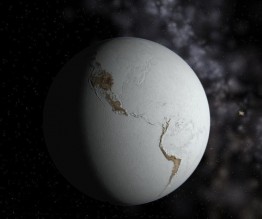It took 100 million years for oxygen levels in the oceans and atmosphere to increase to the level that allowed the explosion of animal life on Earth about 600 million years ago, according to a study co-authored by two University of Washington scientists and led by the University College London. Before now, it was not known how quickly Earth’s oceans and atmosphere became oxygenated, and whether animal life expanded before or after the rise in oxygen.
Read more at UW Today »Composting food waste remains your best option, says UW study
Many people compost their food scraps and yard waste because they think it’s the right thing to do. A new University of Washington study confirms that sentiment, and also calculates the environmental benefits associated with keeping these organic materials out of landfills. The biggest takeaway for residents of Seattle, San Francisco and other places that offer curbside compost pickup is to take advantage of that service — and pat yourself on the back for using it.
Read more at UW Today »Governor hosts climate conversation at UW's College of the Environment
From the Conference of Parties in Paris to the University of Washington, Governor Jay Inslee is leading the climate conversation forward in Washington.
Read more and see the video from King 5 »The dream lab: UW's Friday Harbor Laboratories
Make no mistake, the sea is changing. Warming waters are causing some organisms to become more abundant, while undermining others’ ability to fight off disease. Invasive species, overfishing and mutated diseases are all signs and sources of changes to come. Increased acidity, whether from human activities like runoff and carbon emissions or from the upwelling of deeper waters, affects the ability of clams, oysters and fish to form shells and skeletons.
Read more in Columns »Swim record: Ray Hilborn and the Alaska Salmon Program
Ray Hilborn watched with satisfaction last summer as the near-record sockeye salmon run he and his UW colleagues had forecasted finally flooded from Bristol Bay up through the lakes and creeks of southwest Alaska. Their prediction? Forty-nine million sockeye—up more than 50 percent from the average of 32 million. When the season started slowly Hilborn got antsy, recalling the 1995 run, in which “there was nothing, nothing, nothing and people started to despair,” says the aquatic and fishery sciences professor.
Read more in Columns »





